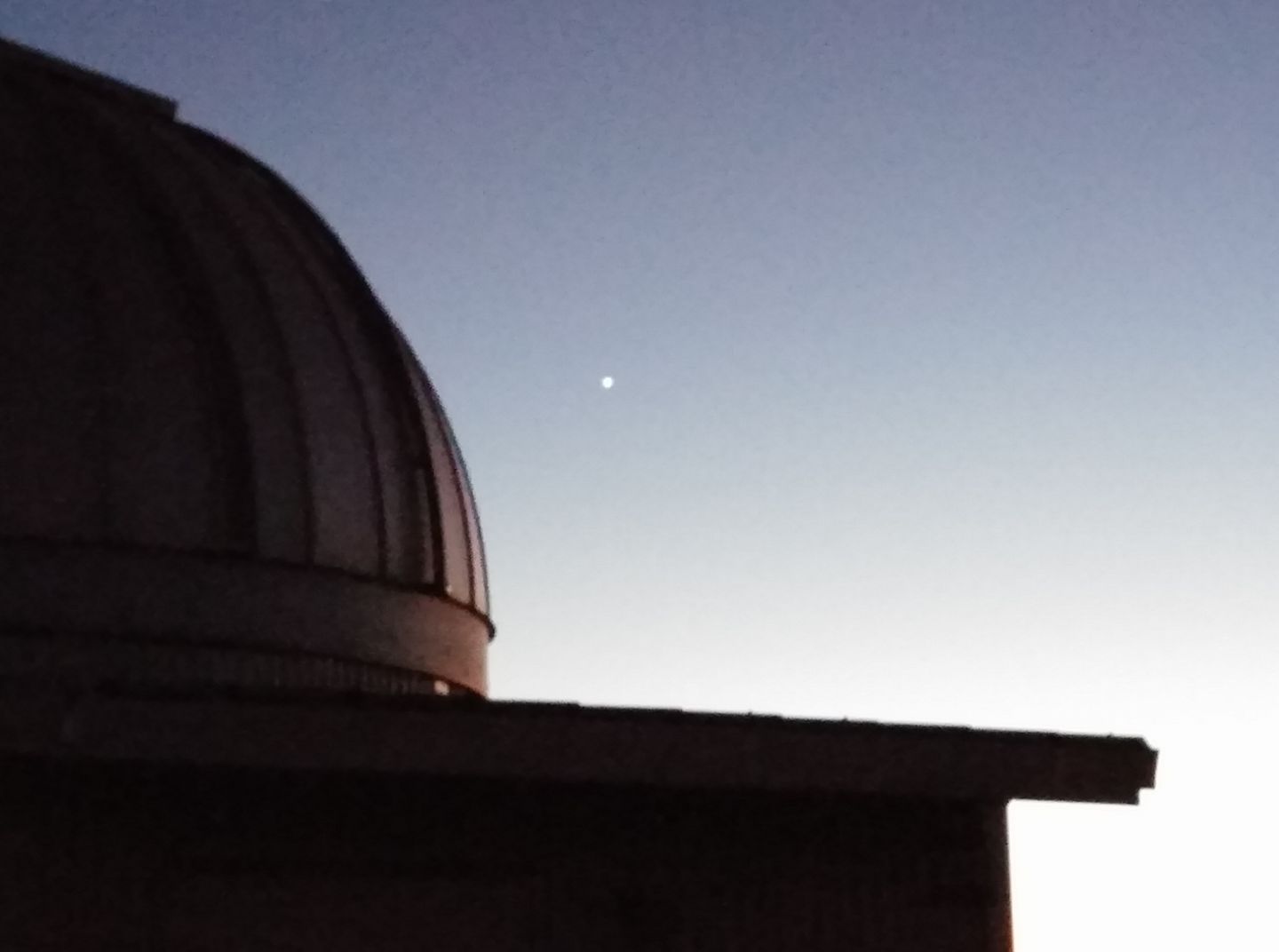
| Observer: | Tom Campbell |
| Location: | College Station, Texas (Long: 101°56'W Lat: 33°47'N) |
| Telescope: | Zhumell 12" f/5 Dobsonian |

Tonight's meeting of the Brazos Valley Astronomy Club (BVAC) was conducted at the Texas A&M University Teaching Observatory. Upon arrival, I couldn't help but notice Venus shining gloriously over one of the observatory domes, so I snapped the above photo.
The main part of the meeting was a great talk by Dr. Nicholas Suntzeff about unanswered questions in cosmology. Very enlightening and entertaining. It could be summed up best by a quote from Lev Landau: "Cosmologists are often in error, but seldom in doubt."
After the meeting, the skies were remarkably clear. However, the temperatures were rapidly dropping and dew was quickly covering the ground. Regardless, I set up the Biggie Z to show some favorites to the small crowd, which included a few college students who were interested in becoming club members.
By this time, Venus had already set and Saturn was below the trees. I pointed the scope at Mars. The scope had not even had a chance to properly cool down yet (it was sitting inside my car during the meeting), so the viewing was not ideal. You could tell it was gibbous, and if you looked carefully you could make out a couple of details, but nothing to write home about.
Pegasus was flying higher, so I took aim at the globular cluster M15. This brought about some nice comments. I've seen it look better, but it was still resolved to the core.
Wanting to show them something memorable, I swung around to M11, the Wild Duck Cluster. Everyone loved this one, including us old-timers who have seen it hundreds of times. At 209x, several dozen stars were visible as glistening jewels on velvet, taking up most of the field of view.
One of the club members wanted to see NGC 7662 (the Blue Snowball) in Andromeda, so I pointed there next. The college students weren't as impressed with this one until we explained exactly what they were looking at.
The temperature was quickly dropping now. My telescope tube was soaking wet and I could tell the optics were starting to struggle a bit. I decided to show them the Great Andromeda Galaxy, but first, I wanted to check out Mirach's Ghost (NGC 404). Some of the students had a bit of trouble seeing it in the eyepiece, but after we pointed out exactly where it was in the field, most of them were able to see it.
So onward to the finale. I dropped the power to 60x and put M31 (Great Andromeda Galaxy) and M32 in the field of view. Then as a vision test, I dropped down to M110. Dr. Suntzeff had mentioned M31 during his presentation, so that gave the galaxy a little more meaning to everyone present.
The observing session lasted less than an hour, but everything was so sopping wet with dew, there really wasn't much point in continuing. Besides, some of the crowd neglected to wear jackets and were standing around with their arms folded trying to keep warm. I called it a night and packed up.
All in all, a short but great session and the club may get a couple of new members out of the deal, so it was a success by any measure.